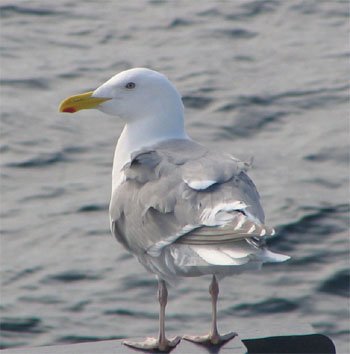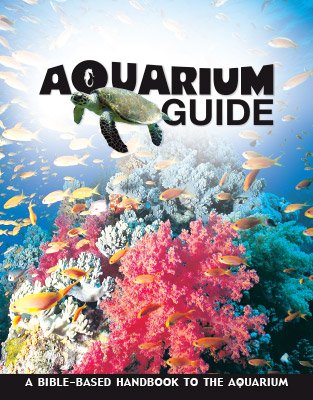Glaucous-Winged Gull
Created on Day 5
on June 15, 2012The glaucous-winged gull eats mollusks that have hard outer shells by dropping them onto coastal rocks from the air to break them open.
Design

The glaucous-winged gull eats mollusks that have hard outer shells by dropping them onto coastal rocks from the air to break them open. How does the gull know to do this to get to the food inside the shell? The Creator either gave the gulls the ability to learn this behavior, or it was programmed into the gull from the beginning.
Features
- The adult glaucous-winged gull has pale gray wings and back, a white body, and pink legs. Its bill is yellow with a red spot. The skin around the eyes is a pink color.
- The head and neck of non-breeding adults is streaked with brownish-gray.
Fun Facts
- Some of the calls of the glaucous-winged gull sound like cries, chuckles, and hisses.
- The adult gull regurgitates food for its young.
- This bird often spends a lot of time on land eating the garbage from the docks.
- In addition to mollusks, this species of gull feeds on salmon roe (eggs) and the remains of dead or dying fish killed by bears during spawning runs.
CLASS: Aves (birds)
ORDER: Charadriiformes (shorebirds and relatives)
FAMILY: Laridae (gulls and terns)
GENUS/SPECIES: Larus glaucescens
Size: 2–2.3 ft (0.6–0.7 m); wingspan 4.5 ft (1.4 m)
Diet: Includes carrion, fish, invertebrates, eggs, and small mammals
Habitat: Primarily along the coasts of the northern Pacific Ocean,
from Alaska and the Aleutian Islands to northern
Washington state; winters as far as Baja, California and
the Hawaiian Islands
Aquarium Guide
With fun facts about more than 100 animals, this long-awaited Aquarium Guide includes beautiful pictures and reveals the incredible facts and design features that point to our amazing Creator. This handy size guide is excellent for school field trips and family trips to your favorite aquarium!
Browse Kids Book- © 2024 Answers in Genesis
- Privacy Policy
- Contact
- About

